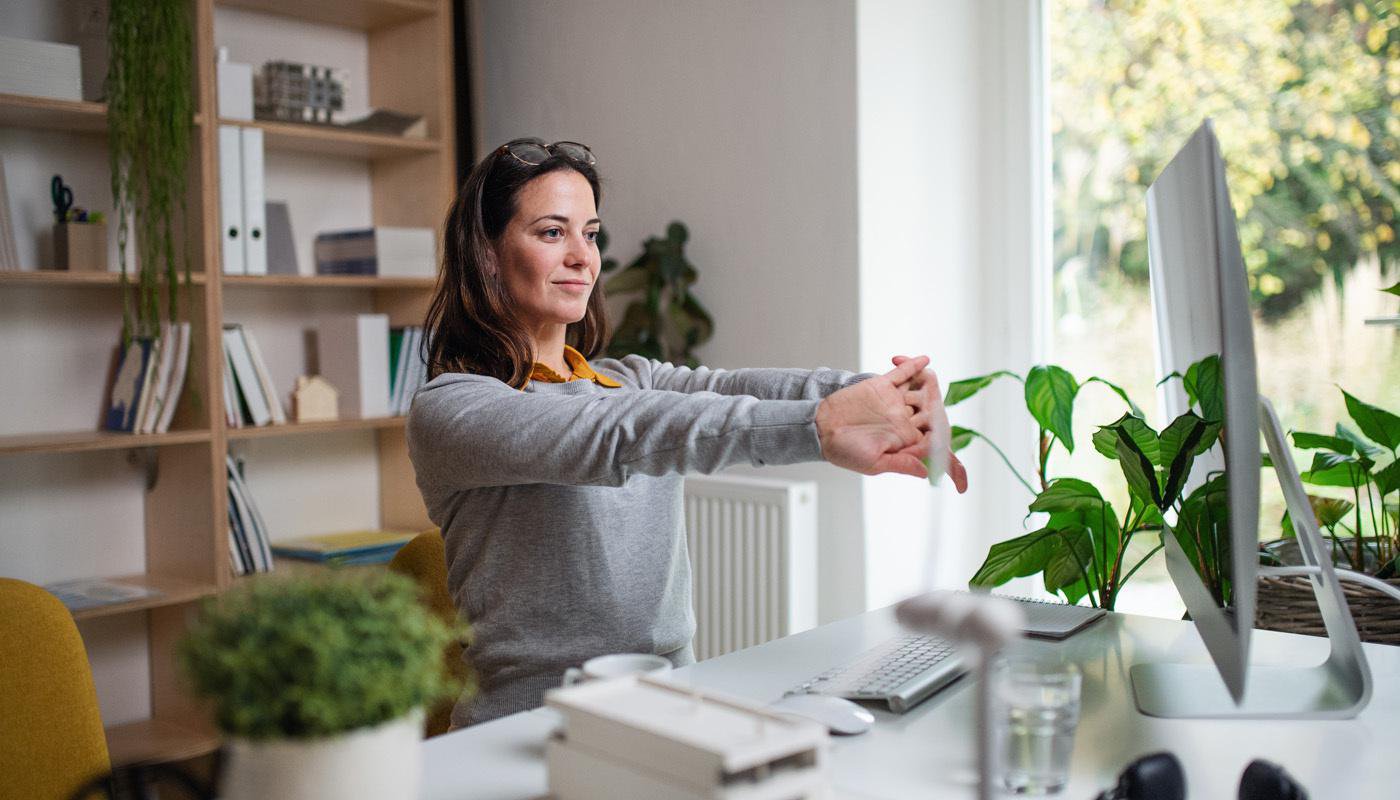
Prevent poor posture when working from home
Prevent poor posture when working from home
There is a lot to be learned from disaster management in how we deal with the challenges of this year that can be applied to setting up flexible working arrangements. In the period following an earthquake, geologists deal with aftershocks. In case of either natural or man-made disasters, we’re talking about fallout management.
The headlines in the newspapers, as well as the trade press for people management, continue to explore the changes the UK workforce is going through in 2020 and beyond, especially when it comes to flexible working. While campaigns to incentivise workers to return to office are being proposed, the CIPD’s viewpoint on flexible working, regardless of the circumstances brought on by the pandemic, is that flexible working should be the norm, not the exception.
Then there are entrepreneurs who are keen advocates of remote working, like Amir Salihefendic, the founder of Doist, the tech company that brought us the remote-working app Todoist. He firmly believes that ‘remote-first working could be a paradigm shift similar to the industrialization age because it’s the first time in human history that people can get great jobs regardless of where they live’. COVID-19 and the subsequent lockdown only sped up the inevitable transition to remote first.
What does disaster management have to do with homeworking?
Like with all disasters, people in general are unaware at the beginning as to for how long the consequences will be felt. As the time progresses, the acute stress felt so keenly while the disaster was unfolding seems to have passed - life inexorably, albeit slowly, goes back to its pace, as anecdotally evidenced by many survivors.
It is the phases of fallout and aftershocks that we’re entering right now: the possibility of workers quarantining after coming back from holidays and the second wave in the autumn and winter months (aftershocks), and long-term consequences like mental health issues and musculoskeletal disorders (fallout).
The people coming back from abroad who would have to quarantine still have to maintain their productivity. Even if completely healthy, they would have no option but to work from home. And with the potential second wave, as evidenced in the pockets of post-lockdown COVID-19 spikes in Aberdeen, Preston and Birmingham, among others, it seems that the working from home and flexible working are here to stay, at least until the end of this year.
With the transition to flexible working where people can choose to work from home several days a week, and from the office the rest of the time, it looks like there is a case to properly prepare the home space for the office hours.

Flexible working and home hazards
When in the office, the risk assessment regarding the posture has been carried out in most cases. The workplace ergonomics dictate that the office is set up to remove risk factors leading to musculoskeletal injuries and allow for improved human performance and productivity. When dealing with flexible working, the lines are a bit blurred.
At home, your office employees have set up their desks on kitchen tables, in bedroom nooks, and in some examples, on the ironing board. Very few people have the luxury of a dedicated office space in their actual abode.
Furthermore, the chairs we mostly have in the house are either those that correspond with our dining table, or a vanity station. And if you’re design-minded, and have invested in the Eames, Eiffel or Arne Jacobsen chairs, you seemingly have no interest in replacing them with something as ugly as Amazon’s best seller.
And completing the trifecta of hazards when working from home is the fact that employees often have everything they need at their fingertips. That means they get up from their chairs much less than they normally would, resulting in fatigue felt in the eyes, joints, and bones.
These consequences of poor posture when at a home working station will not be felt immediately – most likely not in a year’s time. So why are we talking about it now? The burden of absence management will fall upon the HR professionals in your organisation, creating a potential chain reaction in the loss of productivity that can seriously impact your bottom line.
Get ahead of possible musculoskeletal disorders
There is a solid business reason for establishing an ergonomics program that is proactive and viewed as a strategic continuous improvement process that makes a positive impact on the entire business. In the UK alone, musculoskeletal disorders account for 27.8 million working days lost: one fifth of all absences are related to MSDs, especially back problems.
Assessments for remote and onsite employees involve two lines of approach: reactive – treating someone with an existing problem and proactive – identifying factors that could lead to a health problem. Poor posture, for instance, is a major cause of neck and back pain and repetitive strain injury can and will limit a person’s quality of life and ability to do their job. If you’re in pain for more than three months, there is the potential for psychological impactthat will affect your recovery, according to the HR director.
In order to get ahead of these potentially costly pitfalls, the best option is to train employees and raise awareness. At Sponge, we have prepared a downloadable checklist that can help you establish where your employees are when it comes to setting up their home workstations. We have an off-the-shelf course ready to support your immediate needs for remote learning on Display Screen Equipment, as well as years of experience in designing bespoke elearning modules in workplace ergonomics for world leading brands and multinational companies.
In nature, both the fallout and the aftershocks are inevitable, and for the most part, not preventable. But in the world of office working, we can exercise some control over them. Prevention is always better than cure, and it pays dividends in the long term to incorporate the workplace ergonomics strategies to strengthen your workforce’s resilience, through training them to overcome potential physical pitfalls. Contact us to see how we can support you in developing your employees. The companies that mitigate these risks will be the ones getting ahead of the competition in a year’s time.




